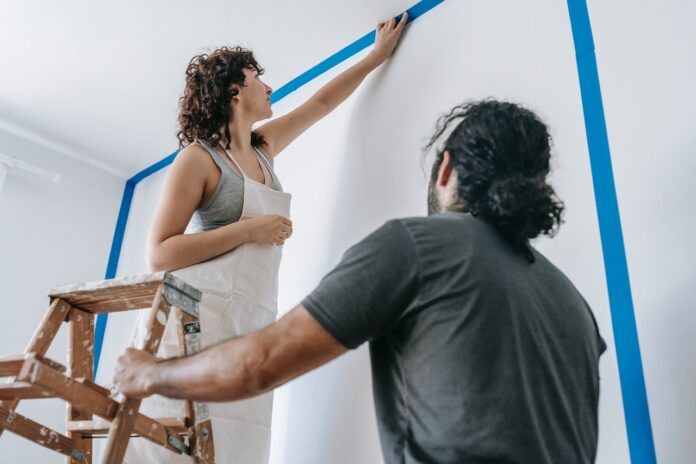When it comes to building muscle, the common imagery that springs to mind is often a gym filled with heavy weights, clanking iron and a soundtrack of roaring dudes. However, there’s an alternative approach that’s been gaining traction and respect in the fitness community: callisthenics. This form of exercise utilises one’s own body weight to build muscle and strength, offering a unique set of benefits and challenges, potential for muscle growth and new motivation.
So, if you can’t get to a gym easily, don’t have the time to set aside for daily trips there, or simply prefer the organic, freeform, freeing nature of bodyweight training, then callisthenics could be for you. With the help of AS Personal Training, here are some top tips on building muscle without using weights.
Understanding Callisthenics
Callisthenics is rooted in ancient Greek traditions, with the word itself deriving from the Greek words ‘kalos’ (meaning ‘beautiful’) and ‘sthenos’ (meaning ‘strength’). It encompasses a range of exercises that are rhythmic, systematic, and often involve minimal equipment. The beauty of callisthenics lies in its simplicity and the fact that it can be practised almost anywhere.
The Benefits Of Bodyweight Training
Before we delve into the how-tos, let’s explore why you might choose callisthenics over traditional weightlifting:
- Accessibility: No need for expensive workout equipment or gym memberships; your body and gravity are your primary tools.
- Versatility: You can easily modify exercises to increase or decrease difficulty, making it suitable for all fitness levels.
- Functional Strength: Calisthenics develops strength that’s applicable to everyday movements and activities.
- Balance and Coordination: These exercises often require control and precision, enhancing your overall body coordination.
- Reduced Injury Risk: With proper form, the risk of injury is often lower than with heavy weights, as you’re less likely to overexert with external loads.

Building Muscle With Calisthenics
Now, let’s get into the nitty-gritty of how to build muscle through callisthenics.
Master The Basics
Before you attempt advanced moves, ensure you have a solid foundation. Focus on mastering the following fundamental exercises:
Push-Ups
A staple for chest, shoulders, and triceps…
- Hand Positioning: Experiment with hand positions to target different muscle groups. For instance, placing your hands closer together will work the triceps more, while a wider stance focuses on the chest.
- Elevation: Elevate your feet to increase the difficulty and target the upper chest and shoulders.
- Tempo: Slow down the eccentric (lowering) phase of the push-up to increase muscle time under tension.
- Volume: Gradually increase the number of sets and reps as you get stronger.
- Variations: Incorporate push-up variations such as archer push-ups, one-arm push-ups, or explosive push-ups to challenge your muscles differently.
Pull-Ups/Chin-Ups
Excellent for back and bicep development…
- Grip Variation: Use different grips (overhand, underhand, neutral) to engage different parts of your back and biceps.
- Pause Reps: Pause at the top of the movement to increase intensity and improve grip strength.
- Negatives: Focus on the lowering phase by jumping up to the bar and then slowly lowering yourself down.
- Volume: Add more reps or sets over time, or try to do more pull-ups within a set time frame.
- Assistance: If you’re struggling with pull-ups, use resistance bands for assistance or perform inverted body rows as a progression.
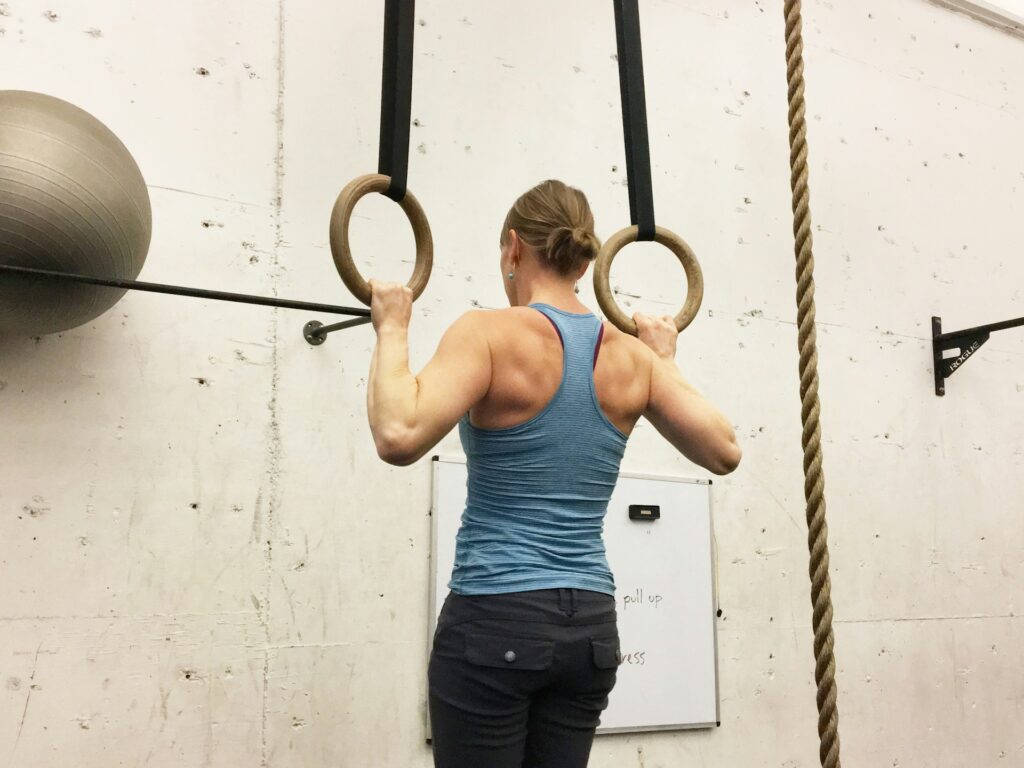
Squats
Target the legs and glutes…
- Depth: Aim for a full range of motion, squatting down until your thighs are at least parallel to the ground, to engage the maximum number of muscle fibres.
- Foot Position: Adjust your stance width and toe angle to target different areas of the legs.
- Tempo: Implement a slow tempo or pause at the bottom of the squat to increase difficulty.
- Jump Squats: Add plyometric jump squats to build explosive power.
- One-Legged Squats: Progress to pistol squats or Bulgarian split squats for a unilateral challenge that also tests balance.
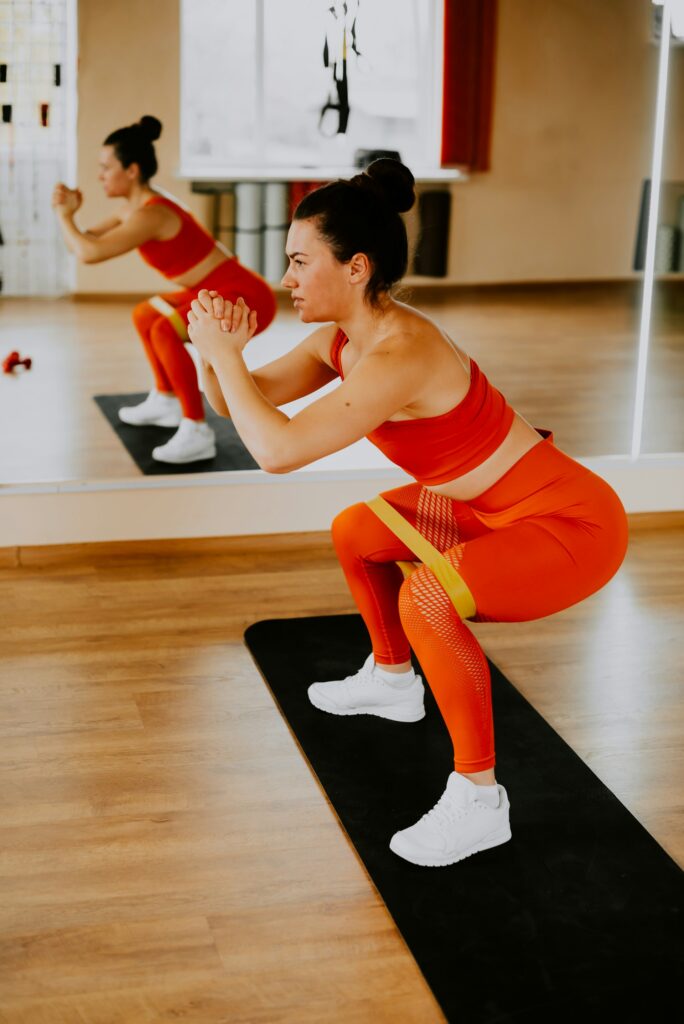
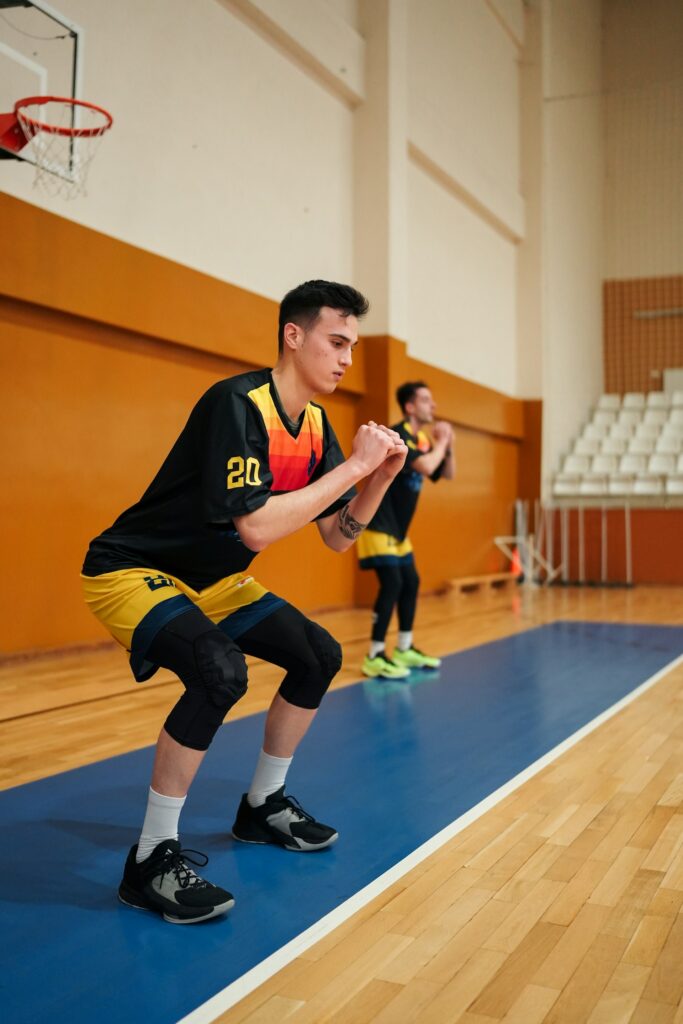
Dips
Work the chest, shoulders, and triceps…
- Depth: When doing dips, go as low as you can to fully engage the chest and triceps, but without compromising shoulder health.
- Body Position: Lean forward slightly to place more emphasis on the chest, or stay upright to focus on the triceps.
- Leg Position: Elevate your legs to increase the difficulty or cross them to help with balance.
- Weighted Dips: Once you’ve mastered bodyweight dips, add a weight belt or hold a dumbbell between your feet for added resistance.
- Isometrics: Hold the dip at the lowest point for a few seconds to increase intensity.
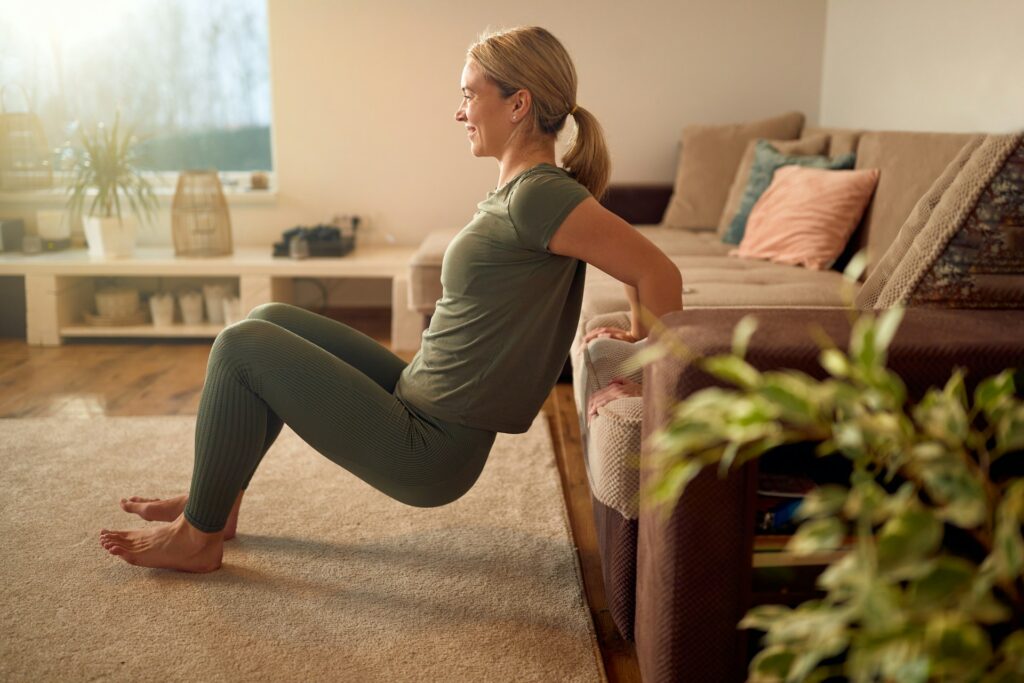
Planks
Strengthen the core…
- Posture: Ensure your body forms a straight line from head to heels, engaging your core, glutes, and thighs to maintain proper alignment.
- Variations: Try side planks, reverse planks, or planks with leg lifts to work different muscle groups.
- Movement: Add movement to your plank by performing plank jacks, mountain climbers, or by walking your hands out and back in.
- Time: Gradually increase the duration of your planks, aiming to hold the position for longer periods.
- Props: Use an exercise ball or TRX bands to add instability, which forces your core to work harder.
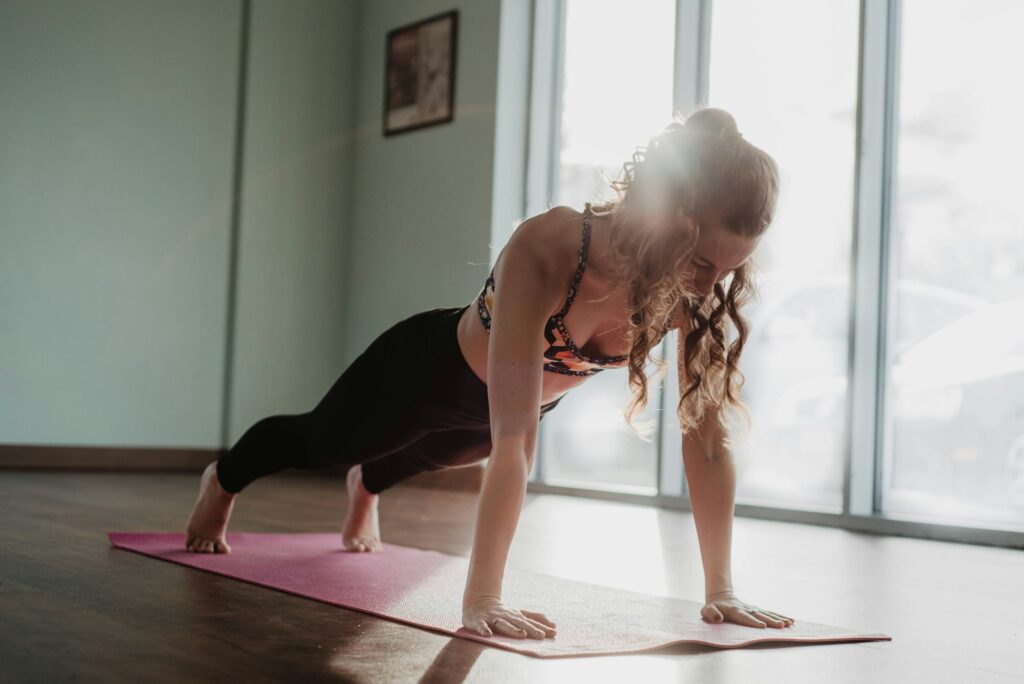
Progression Is Key
To build muscle, you must continually challenge your body. Once you can comfortably perform the basic exercises, start increasing the difficulty. This can be done by:
- Adding More Repetitions: Increase the number of reps per set.
- Elevating Intensity: Slow down the movements to increase time under tension.
- Progressing to Advanced Variations: For example, move from regular push-ups to diamond push-ups or archer push-ups.
More Advanced Calisthenics & Body Weight Exercises
As you progress in callisthenics, you can challenge yourself with more advanced exercises that require greater strength, balance, and body control. Here are five advanced callisthenics exercises to consider incorporating into your routine:
Muscle-Ups
A muscle-up is a combination of a pull-up followed by a dip. It’s an advanced exercise that targets your upper body and requires significant strength and technique.
- How to Progress: Start by mastering pull-ups and dips separately. Then, work on explosive pull-ups, getting your chest to the bar. Use resistance bands for assistance if needed, and practise the transition from the pull-up to the dip in a fluid motion.
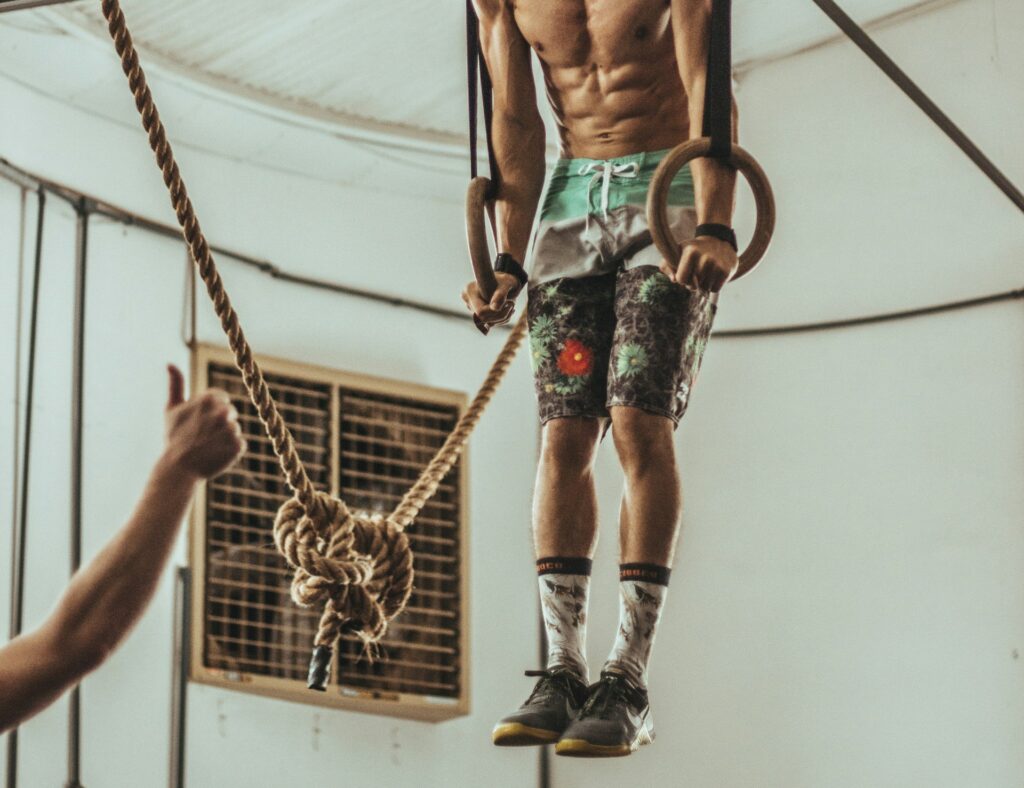
Front Lever
The front lever is an impressive skill that involves holding your body horizontal to the ground, parallel with the floor, while gripping a pull-up bar.
- How to Progress: Begin with easier variations such as tuck front levers or one-leg extended front levers. Gradually extend your legs as your core and back strength improve. Practice holding the position for longer periods.
Planche
The planche is a powerful move where you hold your body parallel to the ground, supported only by your hands. It requires significant wrist, arm, shoulder, and core strength.
- How to Progress: Start with planche leans and frog stands to build up strength. Progress to tuck planche and slowly extend your legs out as you become stronger. Use parallettes or push-up bars if wrist discomfort is an issue.

Human Flag
The human flag requires you to hold your body sideways and parallel to the ground, gripping a vertical pole. This move demands substantial core, arm, and shoulder strength.
- How to Progress: Begin by practicing the flag hold with your bottom arm pulling and your top arm pushing. Work on negative flags, starting from the top position and slowly lowering down. Build up to the full human flag by increasing your hold time.
Handstand Push-Ups
Handstand push-ups are an advanced vertical pushing exercise where you perform a push-up in a handstand position. This targets the shoulders, triceps, and core.
- How to Progress: First, get comfortable with holding a handstand against a wall. Practice partial range of motion push-ups, gradually increasing the depth. Move away from the wall as you gain balance and control.
When attempting these advanced exercises, it’s crucial to have a solid foundation of strength and to have mastered the basic movements. Always focus on form to prevent injury, and consider seeking guidance from a calisthenics coach or experienced practitioner.
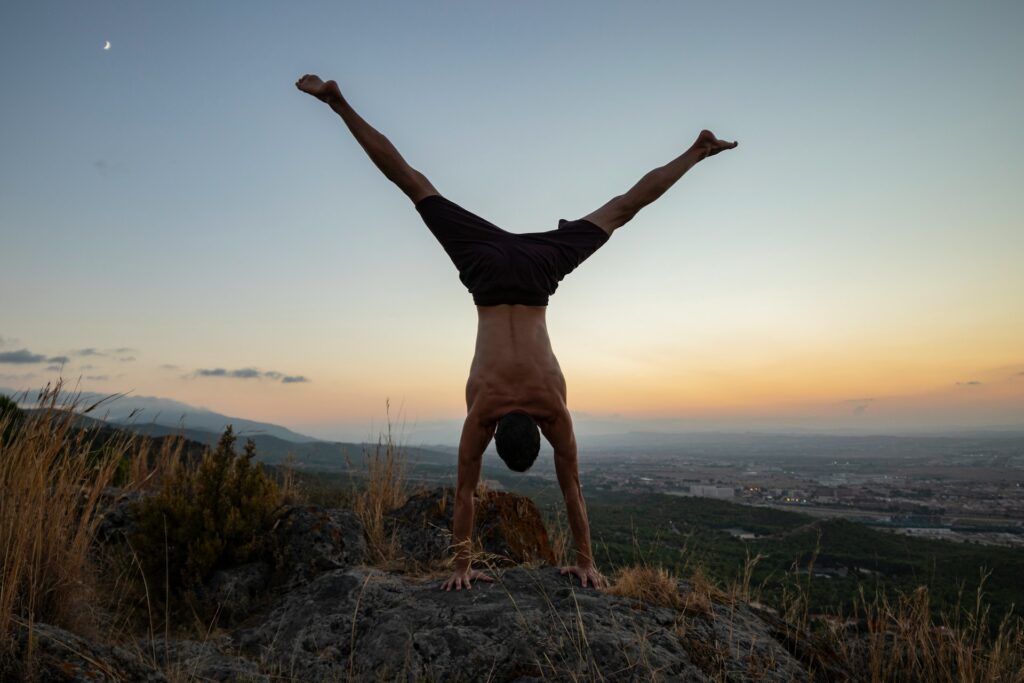
Implement A Routine
Consistency is vital. Create a balanced routine that targets all the major muscle groups. A typical routine might look like this:
- Monday: Upper body (push focus)
- Tuesday: Lower body and core
- Wednesday: Rest or active recovery
- Thursday: Upper body (pull focus)
- Friday: Lower body and core
- Weekend: Rest or light activities (e.g., walking, yoga)
Don’t Neglect Nutrition
Muscle growth isn’t just about exercise; nutrition plays a significant role. Ensure you’re consuming enough protein to aid muscle repair and growth, and don’t forget to hydrate adequately.
The Bottom Line
Callisthenics offers a unique approach to muscle building that’s both effective and accessible. By mastering the basics, focusing on progression, and paying attention to form, nutrition, and recovery, you can achieve impressive results without ever lifting a weight. Remember, the journey to building muscle is a marathon, not a sprint. Stay patient, stay consistent, and enjoy the process.
Whether you’re a seasoned gym-goer looking for a new challenge or a beginner seeking a cost-effective way to get fit, callisthenics can be a rewarding and practical option. So why not give it a go? Your body might just thank you for it.




